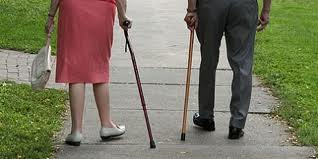 |
AGEING POPULATION |
Demographics currently indicate that
the percentage of seniors in the Canadian population is rapidly
increasing. According to Statistics
Canada, by the year 2015, seniors (65+) will outnumber children (15 years and
under). By 2031, there will be 9 million
seniors and only 5 million children in Canada ;
seniors will represent approximately 25% of Canada
- At approximately age 40, changes occur within the visual system that result in decreased visual acuity. The normal ageing process brings about a decrease in one’s ability to see sharply and to focus. This state, referred to as presbyopia, is correctable with reading glasses or bifocals.[iii]
- Age Related Macular Degeneration is the leading cause of blindness in the Western world and is prevalent in people aged 65+.
- Cataracts are the leading cause of blindness in the world, according to the World Health Organization.
- Glaucoma can also cause age-related vision loss, as pressure builds in the eye and the nerve fibers within the retina are destroyed.
- Diabetic retinopathy is a condition that is secondary to diabetes.
Current Status- Age-related Diseases
and Ageing:
Researchers in Canadian universities
and hospitals have made great strides in developing treatments for some of
these conditions/diseases. Improvements
in drug and laser therapy have increased our understanding of how to slow the
progression of certain eye diseases.
Research is presently being conducted on gene replacement therapy,
optical implants, and stem cell transplants, all of which were not a
possibility just ten years ago.
Notwithstanding the progress being made in the field, we must still be concerned by the fact that as the Canadian population ages, the ophthalmic industry may need to undergo tremendous adjustments. The rapidly ageing baby boomers will be faced with physiological and functional changes in their vision, and will subsequently turn to eye care professionals. However, despite the predicted increase in vision loss in Canada, we will experience a shortage of eye
care professionals. Meeting the needs of
seniors will become difficult as wait lists to see ophthalmologists grow. Additionally, the high demand for operating
rooms for eye surgeries will only increase, considering the looming demographic
crisis.
Noreen Khan
[i] Statistics Canada
Accessed September 17, 2007.
[ii] AMD Canada
Accessed September 17, 2007.
[iii] Every Eye. Old Age Vision: Age Related Vision Impairment
Explained. Available at: http://www.everyeye.co.uk/htms/oldAgeVision.htm. Accessed September 6, 2007.
No comments:
Post a Comment